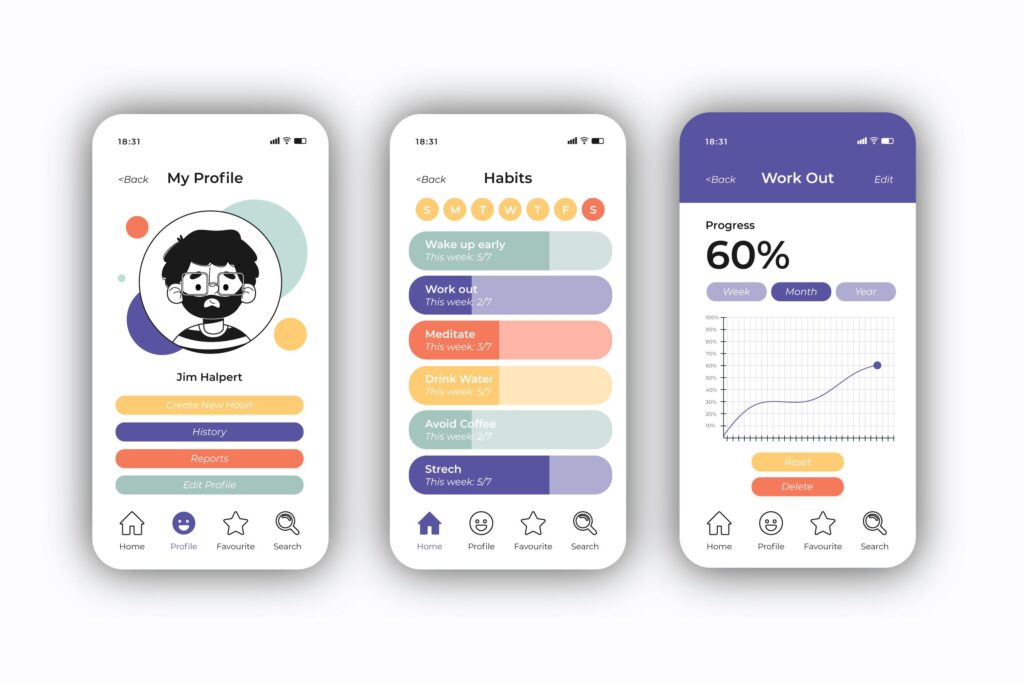10 Crucial User Interface Design Principles for Mastering UI Skills
Designing user interface (UI) is a science and an art. It serves as the user’s link to the digital world, where outstanding user experiences require a harmonious blend of usefulness and aesthetics. In order to create intuitive, visually appealing interfaces, one must comprehend and put basic principles into practice. This is a thorough approach to learning user interface techniques using ten key design concepts as a framework.

Clarity:
A key component of user interface design is clarity. Every interface element should be immediately understood by users in terms of its purpose and usefulness. Clarity can be attained by employing intuitive iconography, succinct messaging, and clear labels. Steer clear of extraneous details and clutter that could confuse users.
Continuity:
Maintaining consistency eases users’ cognitive burden and fosters familiarity. Keep visual components like layout, font, and color consistent between displays and interactions. The user experience is improved and predictability is increased when design patterns are consistent.
Arrangement:
Creating a distinct hierarchy directs users’ focus and facilitates effective interface navigation. Make use of visual cues such as color, size, and contrast to help you arrange content logically and prioritize crucial aspects. A clear hierarchy guarantees that consumers can locate what they’re seeking for fast and without experiencing overwhelmed.
Comments:
Giving feedback is crucial for encouraging user connection and engagement. Users’ sense of control and comprehension are strengthened when they receive feedback that tells them of the results of their activities. To validate actions, recognize user input, and convey system status, use tactile, visual, or audio feedback. A more captivating user experience is produced via responsive interfaces.
Ease:
Simplify difficult tasks to reduce consumers’ cognitive strain. Eliminate pointless procedures, optimize workflows, and give priority to the most important aspects. Adopt minimalist design concepts to produce interfaces that are clear, uncluttered, and center around the essential features. The interface becomes more friendly and more usable for users of all skill levels when it is simpler.

Availability:
Create user interfaces that are inclusive and suitable for a range of user needs and skill levels. Take into account elements like text legibility, keyboard navigation, color contrast, and screen reader compatibility. Adhering to accessibility guidelines guarantees ethical design principles and legal compliance while simultaneously enhancing usability for all users.
Adaptability:
Recognize and accommodate users’ diverse tastes and situations by offering adaptable options for engagement. To cater to varying user needs and preferences, provide alternate pathways, adjustable layouts, and customizable options. Flexibility increases user pleasure and engagement by enabling them to customize their experience.
Appeal to the Eyes:
Beyond mere aesthetics, visual appeal affects consumers’ emotions and perceptions. Design interfaces that are visually appealing by carefully utilizing whitespace, color, font, and artwork. Utilize design elements like harmony, balance, and contrast to arouse the desired emotion or sense of brand identity and provide visual intrigue.
Effectiveness:
Put efficiency first when designing user interface to streamline user processes and reduce friction. Create user interfaces that make tasks easier to complete with fewer steps and interruptions. Make interactions more efficient and give users the tools they need to achieve their objectives more quickly by implementing strategies like progressive disclosure, smart defaults, and predictive input.
User-focusedness:
Above all, throughout the design process, give the end user’s demands and objectives first priority. Use personas, usability testing, and user research to better understand your target audience. To develop solutions that genuinely resonate, gain empathy for the interests, behaviors, and pain areas of your users. User-centric design centers the design process around the needs of the user, which promotes empathy, engagement, and loyalty.

User Interfaces:
The 10 fundamental design principles—clarity, consistency, hierarchy, feedback, simplicity, accessibility, flexibility, visual appeal, efficiency, and user-centricity—must be thoroughly understood and applied in order to acquire UI abilities. Through the adoption of these principles, designers may produce visually appealing and intuitive interfaces that improve user experience and propel success in the digital realm. Incorporating these ideas into your practice will put you on the path to mastery, regardless of your level of experience with user interface design.




